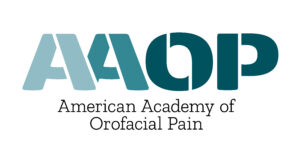Dr. Glenn Clark is a currently full Professor in the Division of Diagnostic Sciences at the Ostrow School of Dentistry of USC and Assistant Dean of Distance Education. He is Director of the Orofacial Pain and Oral Medicine Center, Director of the Orofacial Pain 2-year conventional residency program and Director of the Master’s degree program in Orofacial Pain and Oral Medicine. Dr. Clark began his research work focusing on both temporomandibular disorders and trigeminal motor function and dysfunction including bruxism, dystonia, and chronic myofascial pain disorders of the jaw system. In 1986 Dr. Clark’s expanded his research work to include studies on the diagnosis and treatment of Obstructive Sleep Apnea. This work has involved him as Principal Investigator on several National Institute for Dental Research grants. Dr. Clark has written over 225 research articles, review papers, or chapters in textbooks. He has served as editor or co-editor of five books on Temporomandibular Problems and on Diagnostic and Surgical Arthroscopy. His most recent book is title Orofacial Pain: A guide to medications and management and is published by Wiley-Blackwell Inc. He has been granted membership as a Diplomat of the American Board of Orofacial Pain; he was voted alumnus of the Year of the UCLA School of Dentistry (1990). Dr. Clark was given the Pierre Robin Award for Academic Excellence (2001) by the Academy of Dental Sleep Medicine. In 2005 he was given a lifetime achievement award by the American Academy of Orofacial Pain.
This lecture will examine the role of chronic intermittent hypoxemia as a predictor of adverse OSA related consequences. The objective of the lecture is to understand what is chronic intermittent hypoxemia, what are the serious medical consequences and it will suggest some hypoxic severity levels you should consider when making treatment decision for your patients. The six main questions this lecture will address are (1) How to best measuring human hypoxia, (2) What are the true medical consequences of untreated OSA, (3) What exactly is Endothelial Dysfunction; (4) what is hypoxic load; (5) Why CIH may be a better predictor future disease than AHI. (6) What is the best measure of hypoxia in a patient?



Leave A Comment